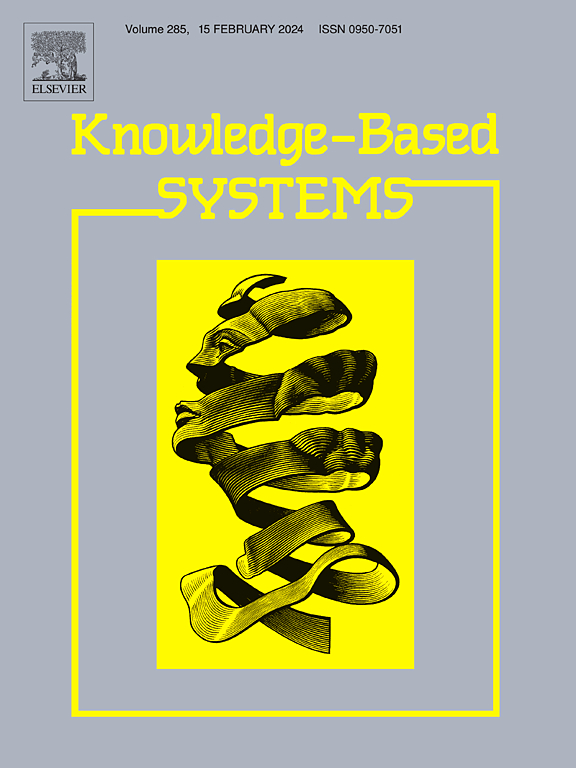MDPM: Modulating domain-specific prompt memory for multi-domain traffic flow prediction with transformers
IF 7.6
1区 计算机科学
Q1 COMPUTER SCIENCE, ARTIFICIAL INTELLIGENCE
引用次数: 0
Abstract
Multi-domain traffic flow prediction aims to develop a versatile model that uses historical traffic data from various sources to forecast future traffic conditions across these individual datasets. Existing deep traffic prediction models typically focus on mining spatial–temporal relationships in a single dataset. However, there are two limitations should be considered: Lack of Model Universality, current traffic prediction research remains constrained by the absence of a universal model adaptable to multiple datasets, restricting performance improvement across diverse scenarios; Underutilized Cross-Dataset Similarities, while existing datasets exhibit both exclusive and shared spatial–temporal patterns, effectively leveraging these common patterns to enhance model performance continues to present technical challenges. To overcome the limitations mentioned above, this study introduces a straightforward yet efficient Modulating Domain-Specific Prompt Memory (MDPM) to model complex spatial–temporal interaction and better leverage similar spatial–temporal patterns across diverse datasets. Specifically, our approach is tailored with three key innovations: (1) A domain-shared encoder incorporating intra-modality Spatial–Temporal Rotary Position Encoder (ST2R) to capture universal patterns; (2) A gate fusion mechanism enhanced by contrastive learning with inter-modality ST2R to optimize spatial–temporal feature alignment; (3) Domain-specific learnable prompt vectors that dynamically guide each transformer layer in capturing unique urban traffic characteristics at node-level temporal granularity. Notably, this architecture achieves state-of-the-art performance without requiring supplementary road network data. Comprehensive experiments conducted on six real-world public traffic datasets show that our proposed method significantly surpasses existing state-of-the-art approaches.
用变压器调制特定于域的提示存储器进行多域交通流量预测
多域交通流预测旨在开发一种通用模型,该模型使用来自各种来源的历史交通数据来预测这些单独数据集的未来交通状况。现有的深度交通预测模型通常侧重于挖掘单个数据集中的时空关系。然而,需要考虑两个局限性:缺乏模型通用性,目前的交通预测研究仍然受到缺乏适用于多数据集的通用模型的限制,限制了不同场景下的性能提高;未充分利用的跨数据集相似性,虽然现有数据集表现出独占和共享的时空模式,但有效利用这些共同模式来增强模型性能仍然是技术挑战。为了克服上述局限性,本研究引入了一种简单而有效的调制域特定提示记忆(MDPM)来模拟复杂的时空相互作用,并更好地利用不同数据集之间相似的时空模式。具体来说,我们的方法有三个关键创新:(1)一个包含模态内时空旋转位置编码器(ST2R)的域共享编码器来捕获通用模式;(2)基于模态间ST2R对比学习增强的门融合机制优化时空特征对齐;(3)针对特定领域的可学习提示向量,动态引导各变压器层在节点级时间粒度上捕捉独特的城市交通特征。值得注意的是,这种架构在不需要补充路网数据的情况下实现了最先进的性能。在六个真实世界的公共交通数据集上进行的综合实验表明,我们提出的方法明显优于现有的最先进的方法。
本文章由计算机程序翻译,如有差异,请以英文原文为准。
求助全文
约1分钟内获得全文
求助全文
来源期刊

Knowledge-Based Systems
工程技术-计算机:人工智能
CiteScore
14.80
自引率
12.50%
发文量
1245
审稿时长
7.8 months
期刊介绍:
Knowledge-Based Systems, an international and interdisciplinary journal in artificial intelligence, publishes original, innovative, and creative research results in the field. It focuses on knowledge-based and other artificial intelligence techniques-based systems. The journal aims to support human prediction and decision-making through data science and computation techniques, provide a balanced coverage of theory and practical study, and encourage the development and implementation of knowledge-based intelligence models, methods, systems, and software tools. Applications in business, government, education, engineering, and healthcare are emphasized.
 求助内容:
求助内容: 应助结果提醒方式:
应助结果提醒方式:


